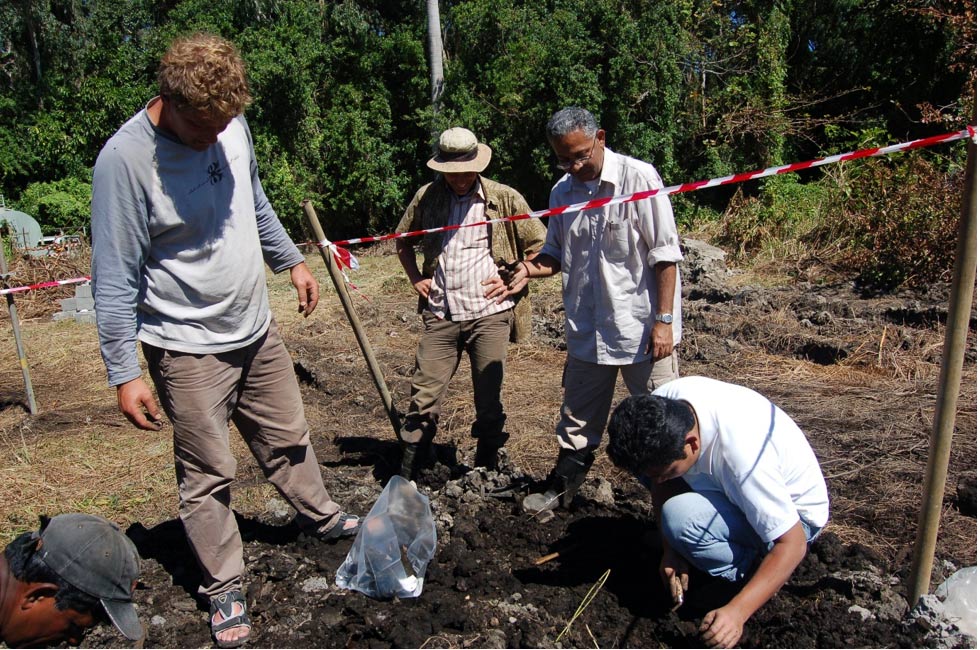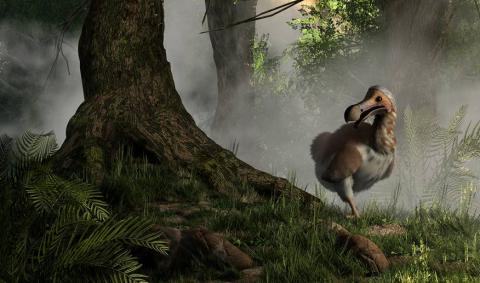Interview excerpt
A sparkling green emerald in a turquoise sea, crowned by an azure sky and formed by volcanic rock, Mauritius is a small independent island nation of 787 square miles in the Indian Ocean with a population of 1.2 million people. It is known for its beaches, reefs, and tranquil sea. Jayshree Mungur-Medhi, an archaeologist and heritage expert on the island, participated in the excavations at Mare aux Songes, where a cache of dodo bones and other fossils were uncovered.
MP: When did we first become aware of the existence of the dodo?
JM: “Dumb as the dodo” is a saying which is famous worldwide, but actually the dodo only existed in Mauritius. Endemic to Mauritius, the dodo, Raphus cucullatus, became extinct in the late 17th century shortly after its existence was discovered and described. It seems that it was first seen and reported by the Portuguese in 1507, who named it “Dodo” as doido means “stupid” in Portuguese. However, the origin of the name is still debated by scientists. In any case, reported in the 16th century and extinct by the late 17th century, the existence of the live dodo was only known for about 100 years.
MP: The dodo is often depicted in caricature form, but what did the strange bird look like?
JM: Since its discovery in the 16th century, the dodo has been described in different ways; for instance, in 1598 Admiral Jacob Van Neck, a Dutch sailor, described it as “larger than a swan having the body of an ostrich and feet of an eagle,” while Sir Hamon l’Estrange mentioned that “the dodo’s chest was covered in chestnut brown feathers.” Some Dutch sailors described the dodo as having quills on its sides and no wings. Such differing descriptions of the dodo by sailors led to a mythical reconstitution of the bird resulting in a fat, ugly, and dumb bird. It has been associated with the Casuary of India and some thought of it as being close to the turkey.

Scientists excavating at Mare aux Songes. Kenneth Rijsdick, Dutch paleontologist and leader of the project, Anwar Janoo, Mauritian paleontologist, and Nipon Medhi doing fieldwork. (Courtesy Jayshree Mungur-Medhi)
Recent archival studies, especially in South Africa, have exposed more Dutch sailors, travelers, artists, and naturalists’ accounts of the dodo and other extinct flora and fauna of the Mauritian soil as well as of other Mascarene islands. These vivid accounts and descriptions of the fauna, including that of Joris Laerle, have helped to reconstruct an artistic depiction of the dodo. Aboard a fleet under Admiral Wolphert Harmenszoon, anchored in Mauritius in 1601 for a month, was Joris Laerle, an artist of exceptional ability. His job was to draw topographical landfalls, suitable anchorage areas, natural history specimens, and any other items of interest in his journal. Laerle drew pictures of Mauritian birds, the only sketches made from real life observations and on Mauritian soil. Close examination of these journal illustrations has provided better insight into some extinct birds’ external morphology.
Read the full interview in the article ‘Finding Mauritius’ Most Elusive Citizen: The Extinct Dodo’ available in the May – June 2024 50th Issue Special Edition of Ancient Origins Magazine. Get it here!
Featured Image: A now-extinct Dodo bird emerging from the mist. Source: Daniel Eskridge / Adobe Stock




